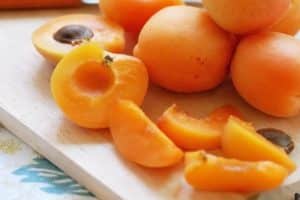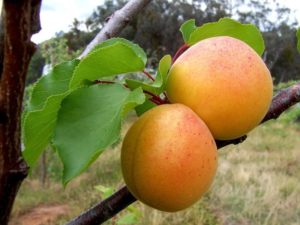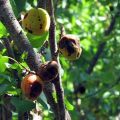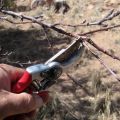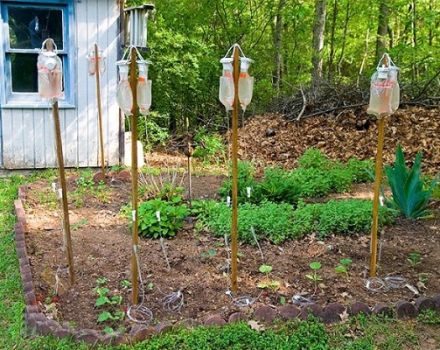How to plant apricot from a stone in the country in the open field, grow and care for it
Apricot is a tree famous for its yield, fruit taste, and ease of care. That is why, even in a small garden, the owners are trying to allocate a plot for a tree. It is not necessary to buy seedlings, if you figure out in advance how to grow an apricot from a stone and in the basic rules of agricultural technology, it is quite possible to get high-quality planting material.
Which apricot pits are suitable for planting
It is believed that trees grown from seeds rarely retain their maternal characteristics, although many gardeners have found in practice that this is not the case. That is why, when planning to propagate a culture with seeds, it is recommended to pay attention to the taste of the fruit. Apricots should be large, sweet, with juicy, aromatic pulp. You also need to check the taste of the kernels of the seeds - there should not be too obvious bitterness. You must also first decide which variety is preferable for the region. In cool areas, it is better to grow an early apricot, in warm areas - the middle or even late ripening period.
When planning the cultivation of a tree from seeds, it is recommended to first check the quality of the planting material:
- Pour warm water into the container.
- Dip the seeds into the liquid.
- Remove seeds floating on the surface, they are unsuitable for growing, low-quality material will not sprout.
Use only fresh seeds for planting. Even when stored properly in a cool room, germination is significantly reduced in just a year.
When to plant apricots
The optimal timing for planting apricot seeds is autumn, spring, but even in summer, gardeners who adore experimenting plant seeds that quickly sprout. Regardless of when exactly the planting material will be sent to the ground, you need to prepare the seed for planting. Until it freezes (does not pass the stage of stratification), one should not expect the appearance of sprouts.
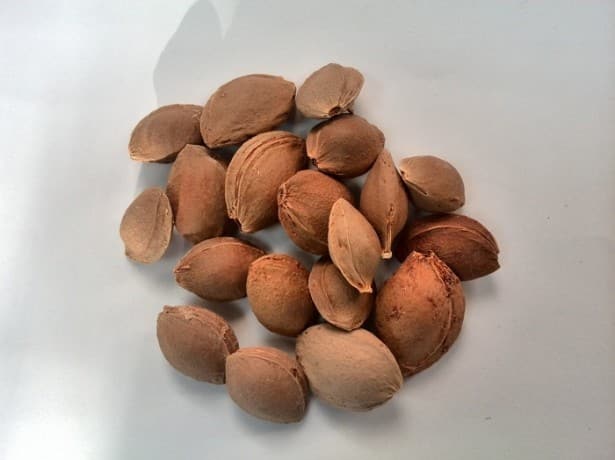
It is recommended to properly freeze planting material under natural conditions, but before spring or summer planting, you will have to send the seeds to the freezer.Autumn planting is simpler - just send the seeds into the ground so that sprouts appear with the arrival of heat.
In the spring
In the spring, it is recommended to germinate the planting material in the open field. It is important to take care of a suitable place in advance - choose a sunny area, without drafts.
Transplanting plants planted after winter is possible only next spring, during the summer it is recommended to carry out normal care.
Send seeds for stratification 2-3 months before planting. Use a freezer for this - the low temperature guarantees high germination. If there is no time left for freezing, it is recommended to apply an emergency method - soak the bones in ice water for 2-3 days. Change the liquid with ice cubes regularly.
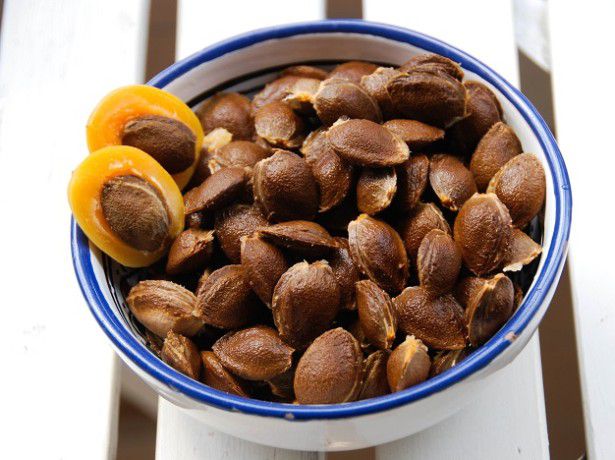
In autumn
Plants obtained from seeds planted in autumn are resistant to difficult climatic conditions and diseases, but in terms of germination they are significantly inferior to spring planting material. Seeds are sent to the open ground just before the frost - from the last days of October until the snow falls.
Not an obstacle for planting planting material, even freezing. The main thing is to make grooves in advance and stock up on soil, with which to sprinkle the seeds later.
About the landing pattern
It is better to plant apricot seeds in long furrows. The distance between the rows is not less than half a meter, this will allow watering, loosening the soil, and applying top dressing without risk of damaging delicate trees. Planting depth - up to 7 cm.

Leave a small distance between the seeds - 20-30 cm, which is recommended to be reduced if there are doubts about the quality of the planting material. It is better to germinate the seeds first, then thin out.
Recommended soil composition
The success of growing an apricot tree largely depends on the correct soil. The soil should be light, provide oxygen access. If the soil on the site is heavy, it is better to purchase a ready-made substrate for seedlings or mix a special composition:
- 3 parts of garden soil;
- part of coarse sand;
- 2 pieces of turf;
- part of wood ash;
- 2 parts of peat;
- part of the clay.
It is recommended to add a little saltpeter (no more than a handful for 10 liters of soil mixture). Mix thoroughly - the components must be evenly spaced. The same soil composition is recommended to be used when transplanting seedlings.
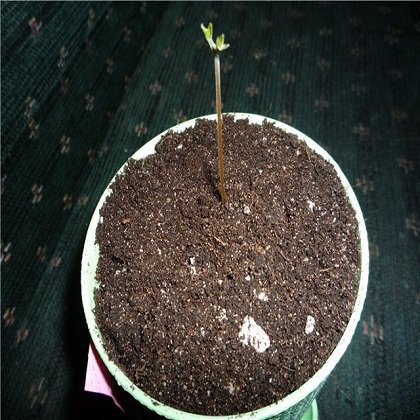
Be sure to put a layer of drainage - fine gravel, pebbles, crushed brick. Put the prepared soil mixture into the furrow, carefully arrange the seeds, sprinkle with a layer of soil. It is recommended to use mulch (peat, compost), which will not worry about drying out the soil.
Optimal planting site
For planting young plants in the country, it is recommended to choose a cozy corner without drafts. Make sure that gusts of wind do not harm the trees - put a fence or choose a site near outbuildings. Apricots are a thermophilic crop, so it is recommended to choose a sunny spot for planting them. Light partial shade is also allowed, but there is a risk that the trees will become too elongated.
Unwanted neighborhood
Compatibility with other fruit trees also plays an important role. It is not recommended to plant apricots near large crops - apples, pears, nuts. The wide crowns of neighboring plants prevent the access of sunlight, fresh air, which causes diseases and poor fruiting.
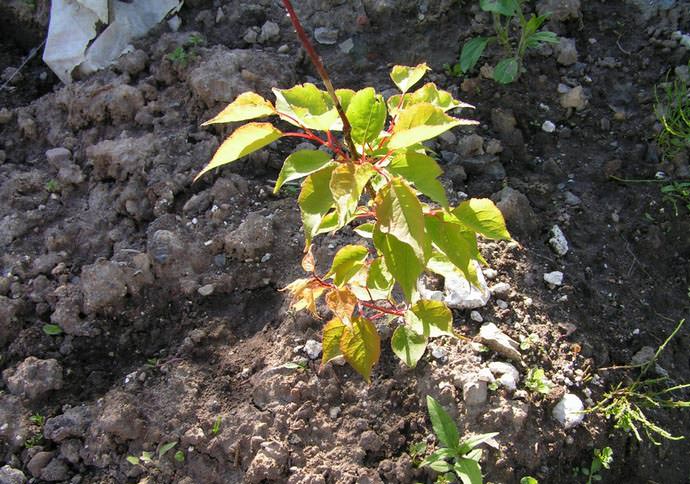
On the plot, cherries and plums are the most recommended neighbors for apricots. Feels good culture near shrubs - currants, raspberries.
Sapling planting depth
It is better to prepare a planting pit for apricot in advance. The recommended diameter is at least 70 cm. The depth is up to half a meter. Be sure to put a drainage layer.
Basic rules for planting plants:
- put prepared nutrient soil (10 cm) on the drainage layer;
- pour a low mound on which to place the root processes;
- sprinkle with soil, easily tamp;
- put a mulching layer;
- make abundant watering.
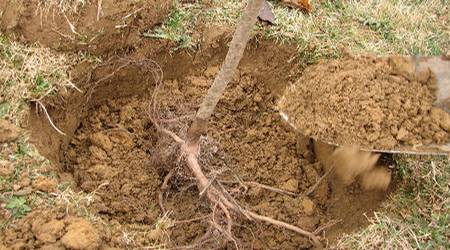
It is imperative to immediately tie the seedling to a support, which will allow you not to worry about gusts of wind.
At what distance to plant
When calculating the distance between seedlings, it is recommended to take into account the apricot variety. Some representatives of this culture grow up to 15 m with a crown radius of more than 4 m. Plants should not be planted too close to each other or other fruit trees - subsequently, such negligence in the rules of agricultural technology threatens with poor fruiting.
The recommended distance between apricots is at least 5 m. You can use a checkerboard planting - leave 5 m between the rows.
Care after planting a seedling
Regardless of the crop, replanting is stressful for the plant. That is why considerable attention should be paid to seedlings, to ensure timely watering, the introduction of nutrients, and pruning. Regularly inspect trees, checking for pests - insects can destroy young plants.
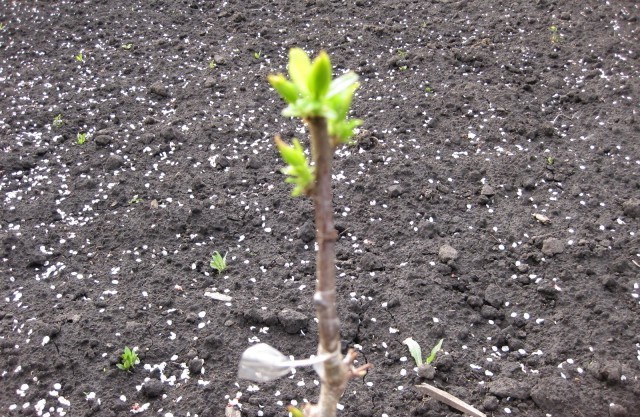
Protection from pests and diseases
The easiest way to protect plants is to take preventive measures in a timely manner. Regularly remove dry, damaged or diseased branches, collect insects. It is imperative to carry out preventive spraying of seedlings with Bordeaux mixture and copper sulfate. It is recommended not to forget about whitewashing with slaked lime.
Loosening the soil should be carried out at least once a month, weeds take a lot of useful substances from the soil, which will immediately affect the growth and development of the culture.
Tree formation
Like most fruit crops, apricot requires crown formation. It is recommended to start pruning 1-2 years after planting in a permanent place. Usually the main trunk is shortened, the distance from the ground surface to the cut point is 75-80 cm.
After the formation of the crown, the skeletal shoots are trimmed. Leave the central branch, shortening it by about a third.Also regularly remove shoots growing from one point - it is recommended to leave only 1-2 branches.
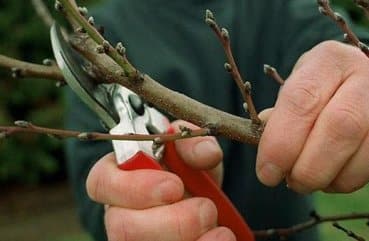
Fertilizer
At first, the apricot has enough nutrients that were introduced during planting. If the soil mixture was not used, it is recommended to put mulch (mix compost with superphosphate, potassium dressings). To improve flowering and more active fruiting, it is recommended to spray with a nitrogen composition in the fall. Prepare the solution at the rate of 100 g of nitrogen fertilizers per 10 liters of water.
Watering
Watering apricots should be carried out in dry weather, but not too often - the trees are afraid of waterlogging. The rate for a seedling is up to 10 liters of liquid. It is recommended to pre-loosen the soil, this will allow moisture to penetrate to a greater depth.
Special attention should be paid to watering three times - at the time of flowering, when the ovary appears, two weeks before the ripening of apricots. Use only warm liquid, aged for several hours under the sun.
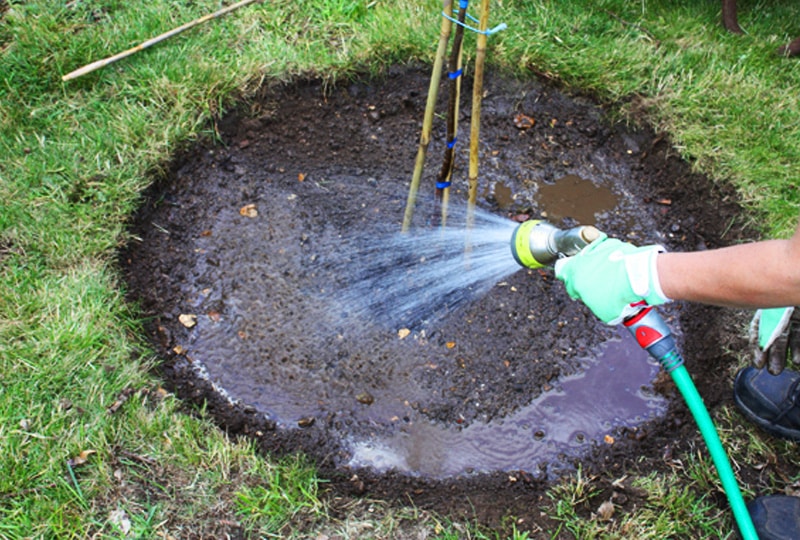
Winter apricot care
The apricot root system can withstand even severe frosts, but it is better to insulate young trees for the winter. It is easy to do this - build a small hut of branches around the trunk, wrap it with foil, put spruce branches. It is easier to protect older trees from frost - just wrap the main trunk with burlap or straw. Cover the near-trunk zone with a thick layer of mulch, cover with snow in winter.
Grafting a tree grown from a stone
Spend grafting of apricots, which are grown from seeds, are not necessary - it often happens that even without this operation, the tree begins to actively bear fruit after a few years. The optimal timing for grafting is early spring, the buds should be at rest. It is better to prepare the graft in advance - even in the fall.
Store in a cool place - basement, refrigerator. The grafting method recommended for young seedlings is copulation. Make long cuts (up to 3 cm). After connecting the sections, fix the inoculation site tightly.
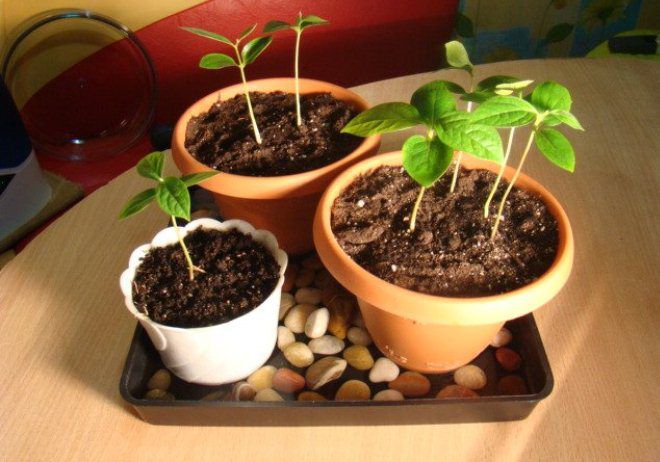
Will an apricot grown from a stone bear fruit?
Apricots grown from seeds do not differ in fruiting from grafted plants, although the first fruits will appear 2-3 years later than in cultivated varieties. During ripening, water the tree abundantly, otherwise there is a risk that the plant will not cope with the weight of the fruit. After fruiting, it is recommended to make sure how much the tree has repeated its maternal characteristics. If the apricots do not differ in size or taste, you need to vaccinate.
The nuances and timing of planting in accordance with climatic conditions
Much in apricot cultivation depends on climatic conditions. The warmer the region, the higher the opportunity to get full-fledged plants from seeds, to achieve a good harvest, not to pay attention to shelters for the winter.
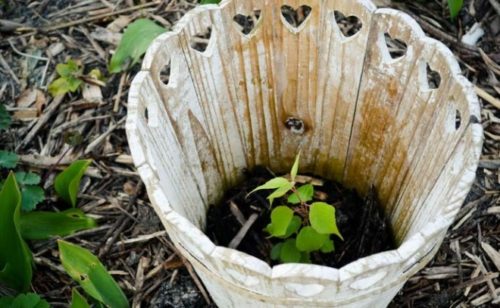
Planting apricots in central Russia
Cultivation of culture in regions with moderate climatic conditions will not be difficult. Planting seedlings should be carried out in the spring (April, May) or in the middle of autumn (October). Be sure to cover the plants for the winter - use burlap, spruce branches, snow.
Planting apricots in Belarus
The temperate climate of Belarus allows planting seedlings in early spring or in mid-autumn. As in the regions of Russia, which do not differ in low, harsh temperatures, you will have to use a cover for the winter. With the onset of the first warm days, be sure to remove spruce branches or burlap - melt water can harm the culture.
Planting apricots in the Urals
The harsh conditions of the Urals make it possible to grow good large apricots, but it is recommended to give preference to early varieties. Landing should be done not earlier than May and not later than the end of September. Be sure to put a thick mulch layer, which will serve as an additional cover before freezing. The trunk must also be insulated - severe frosts can damage the delicate bark of young trees.
Planting apricots in Siberia
When planting seedlings in harsh Siberian conditions, it is recommended to monitor the weather conditions. Go to the garden after the onset of stable heat - in May, June. It is also better not to be late with autumn dates - planting should be carried out in August, September. A warm cover for the winter is mandatory, and it is recommended to insulate the trunk circle and the main trunk.
If the plant is not too large, wrap even branches with burlap or foil, first collect them in a large bundle and fix with twine. Growing apricot, this wonderful culture, from seeds is an interesting and not too complicated process. The main thing is to adhere to the recommendations, the rules of agricultural technology, carefully look after the tree, and avoid gross mistakes that can become fatal to the plant.
